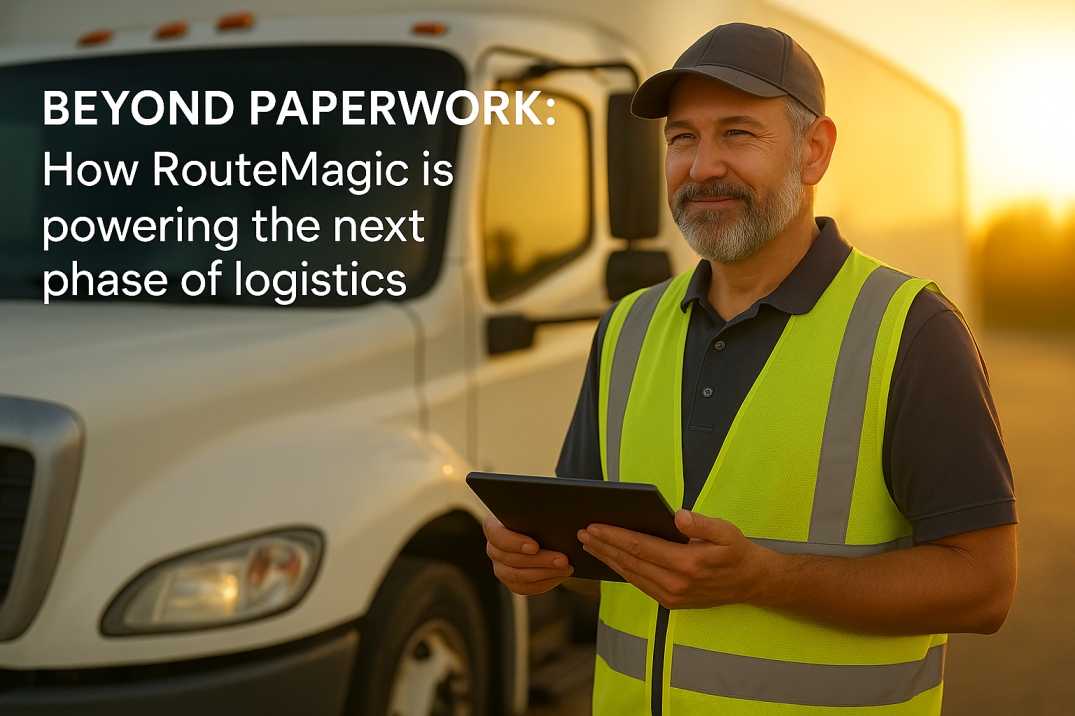Why Predictive Analytics Is Non-Negotiable in Last-Mile Logistics
Delivery Automation, Delivery Planning, Fleet Management, Last Mile Logistics, Logistics Software, Predictive Analytics, Real-Time Visibility, Route Optimisation, RouteMagic, Supply Chain Technology
June 12, 2025

It’s a scenario every operations team knows too well: A vehicle breaks down mid-route, a delivery gets missed, and customer service is flooded with complaints. Your team scrambles to course-correct, but the damage is done. You weren’t inefficient. You were just reactive. And in 2025, that costs more than just fuel.
In today’s high-pressure logistics environment, reactive workflows are no longer enough. Customers expect real-time updates. Teams are stretched thin. Margins are tighter than ever. What businesses need is foresight – the ability to anticipate and act before disruptions unfold.
That’s where predictive analytics comes in.
From Firefighting to Forecasting
Predictive analytics uses historical and real-time data to anticipate disruptions, optimize resources, and guide smarter decisions across your delivery flow. It shifts your ops from chaos control to confident planning. You don’t just solve problems faster. You prevent many of them altogether.
In fact, 82% of manufacturing and supply chain leaders plan to adopt predictive analytics by 2025 (MHI Annual Industry Report), up from just 28% today. It’s no longer a competitive edge. It’s a requirement.
What Predictive Analytics Can Do for Logistics Teams
- Demand Forecasting: Use trends, sales cycles, and market signals to accurately predict demand. Avoid overstocking and stockouts, and reduce holding costs by up to 35%.
- Route Optimization: Predict traffic patterns, weather impacts and fleet availability to optimize delivery paths cutting fuel use and delivery times by up to 30%.
- Inventory Management: Anticipate stock movement at the van level and streamline depot replenishment to improve turnover and reduce waste.
- Risk Mitigation: Identify early signs of equipment failure or route delays. Take preemptive action to avoid bottlenecks.
- Customer Satisfaction: Deliver more accurate ETAs and proactive alerts. Some businesses have reported a 20% boost in CSAT scores after implementing predictive updates.
For example, DHL, a global logistics company integrated predictive analytics into its vehicle maintenance and routing systems. Within a few months, they achieved a 10% reduction in maintenance costs and a 15% decrease in unplanned vehicle downtime. By shifting from reactive repairs to proactive, data-driven interventions and tire data, their fleet uptime improved significantly, translating into smoother routes and more predictable deliveries.
RouteMagic: Enabling Proactive Logistics
RouteMagic goes beyond automation. It gives operations teams real-time visibility into fleet movements, order statuses, and delivery exceptions, helping them not just see what’s happening, but understand what’s coming and act before issues impact delivery.
Our platform combines real-time visibility with smart routing, flexible control layers, and built-in reporting that connects every step from order to invoice. Core features include:
- Dynamic route planning with live fleet status and built-in exception handling
- Three-tiered controls at the customer, driver, and company levels
- Automated standing orders, stock sync, and invoicing in one system
RouteMagic customers like Tom & Ollie, Mr Scratchings, and Pilgrim’s aren’t just automating workflows—they’re anticipating issues before they happen and scaling with confidence.
Why It Matters Now
Customer expectations have changed. Logistics leaders can no longer wait for things to go wrong before reacting. That’s why predictive tools are not just about speed, they’re about control. By investing in forward-looking systems like RouteMagic, distribution businesses are not only preventing delivery disruptions but also safeguarding margins, building trust, and staying ahead of what comes next.
To see how RouteMagic can future-proof your delivery ops, book a quick demo today.


